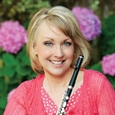There are so many wonderful pieces to explore that programming a recital can be full of difficult but wonderful choices. Flutists and piccolo players have good literature from every period of musical history from the Baroque to the present day. There is so much original music for flute and piccolo that there is no need to rely upon transcriptions. It is important to consider the audience when selecting music. A program that is successful and musically satisfying for one audience may be a disaster for another.
When presenting a piccolo recital, it is important to consider whether you would like to include a piece or two on the flute as well. After all, most piccolo players were flutists first before discovering the joys of the piccolo. Some flute music provides tonal variety as well.
Degree recitals are often easier to program because there is an expectation of breadth of styles. Usually, a student will program one work from each of the major style periods to demonstrate command of the periods. An undergraduate recitalist might begin with a Bach Sonata or Telemann Fantasia, move on to a Mozart flute quartet, followed by a French conservatory piece, perhaps an unaccompanied contemporary work, and close with a Romantic sonata (the Reinecke Undine for example). This program would showcase many historical styles, as well as offer timbral variety with the chamber music. Recitals that are exclusively flute and piano can be somewhat monochromatic so change it up with a bit of chamber music (flute and harp, flute and guitar, a woodwind quintet, or a duo with another woodwind instrument). For those concentrating on piccolo in college studies, include a piece or two on that instrument such as a Vivaldi concerto instead of a Bach sonata or a contemporary work on the piccolo. Much of the greatest piccolo literature was composed during the last 15 years so look beyond the classics as well. Another option is to include the big flutes such as an unaccompanied work for alto flute or the entire Claude Bolling Suite for Flute and Jazz Piano which features the bass flute on one movement.
There is considerably more freedom when planning a recital for the general public or for a convention or conference where the audience is primarily musicians. For my recital at the International Piccolo Symposium, I decided to create a themed recital and featured music with a bird theme. There are so many inventive pieces with aviary themes. I varied the palate quite a bit stylistically, including adding a visual component with Michael Horwood’s Birds. Each movement has coordinating images that are projected as a Power Point presentation. (At the time of composition, they used color slides). Horwood’s Birds includes prepared piano requirements in four of the movements and is quite contemporary sounding, requiring the performer to freely improvise on specific pitches in a few spots. I chose two turn of the century polka pieces (Sweet Birdie and the Canary Polka) which were paired together as vocalists do in song recitals. I also chose two shorter works, Outside My Window, Bird by Gary Schocker and Eugene Magalif’s Colibri (Hummingbird) which was a world premiere for piccolo and piano. I included two short works for flute, Messiaen’s Le Merle Noir and the second movement from La Flute de Pan, Pan et Les Oiseaux, because they acted as a sonic sorbet to cleanse the palate. The centerpiece of the recital was Eric Ewazen’s concerto On Wings of Song. I decided that since the work had wings it would defiantly be able to fly with all the rest of the birds, so my theme had a little bit of leeway.
Themed recitals can go in many directions. You can tie together a recital by region by featuring works by Italian composers or all French music (consider a French evening soiree). Other options might be an All-American recital or works from a particular historical period. I have performed recitals with seasonal themes, Visions of Spring for example, and performed a recital of flute and harp music linked to the Chinese New Year. Themes are a fun way to discover new connections between pieces.
I sometimes avoid longer pieces when programming for the general public. Popular songs on the radio are about 3.5 minutes, so an average listener may find a 20-minute work too long. We seem to be a nation of sound bites with short text messages and tweets replacing longer forms of communication.
For all recitals, it may help to speak to the audience and give them information about the composer and work. Play excerpts of the piece to show listeners the inner construction of the work; this will bring the audience along with you on the musical journey. Performers should develop the ability to speak elegantly and eloquently from the podium. It helps break down barriers between audience and performer and may help you feel at ease as well.
Enjoy the process of building a recital. I usually begin with a huge pile of music that I love and then whittle it down.






